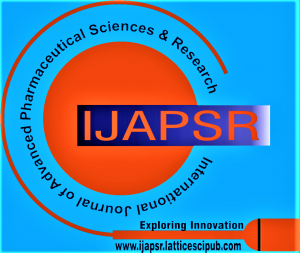![]()
Formulation and Evaluation of Metformin Using Fenugreek Seed MucilageUsed as a Natural Polymer
Kajal Gupta
Kajal Gupta, Department of Pharmaceutics, Jaipur National University, Jaipur (Rajasthan), India.
Manuscript received on 12 May 2024 | Revised Manuscript received on 10 June 2024 | Manuscript Accepted on 15 June 2024 | Manuscript published on 30 June 2024 | PP: 35-41 | Volume-4 Issue-4, June 2024 | Retrieval Number: 100.1/ijapsr.F405104061024 | DOI: 10.54105/ijapsr.F4051.04040624
Open Access | Editorial and Publishing Policies | Cite | Zenodo | OJS | Indexing and Abstracting
© The Authors. Published by Lattice Science Publication (LSP). This is an open-access article under the CC-BY-NC-ND license (http://creativecommons.org/licenses/by-nc-nd/4.0/)
Abstract: The primary goal of this study was to develop and test metformin sustained release tablets employing fenugreek seed mucilage (FSM) as a new binder, as opposed to standard polymers such as xanthan gum and HPMC. The study demonstrates how FSM enables sustained release of medication while maintaining the physicochemical characteristics of metformin. The sustained-release matrix tablets were made on a laboratory scale utilizing the wet granulation process. 5 batches were created, each with varying quantities of fenugreek seed mucilage, xanthan gum, and HPMC. To examine the tablet’s physical properties and consistency, various criteria, including thickness, hardness, weight variation, and content homogeneity, were measured. FTIR tests were performed to determine the compatibility of metformin and the polymers employed. The results showed no incompatibility, indicating that the novel excipient, FSM was not affecting the drug’s physicochemical qualities. The in vitro drug dissolution investigation was conducted using a USP Type II paddle apparatus to quantify the drug release rate from dosage forms and to assess the efficacy of the polymers in retarding drug release. The study found that increasing the concentration of the matrix ingredient decreased the release rate of the medication. Among the formulations, the combination of FSM with HPMC (MS1) resulted in 95% drug release, FSM with xanthan gum achieved 96% drug release, and the MS4 formulation had the most significant drug release rate. Finally, the study showed that fenugreek seed mucilage and xanthan gum effectively develop metformin continuous-release matrix tablets. Lower concentrations of these polymers were more suited and effective, resulting in sustained drug release. This study demonstrates the potential of fenugreek seed mucilage as a novel and effective binder in sustained-release formulations.
Keywords: Physicochemical Qualities, FSM, HPMC (MS1), USP, FTIR.
Scope of the Article: Pharmaceutical Technology
